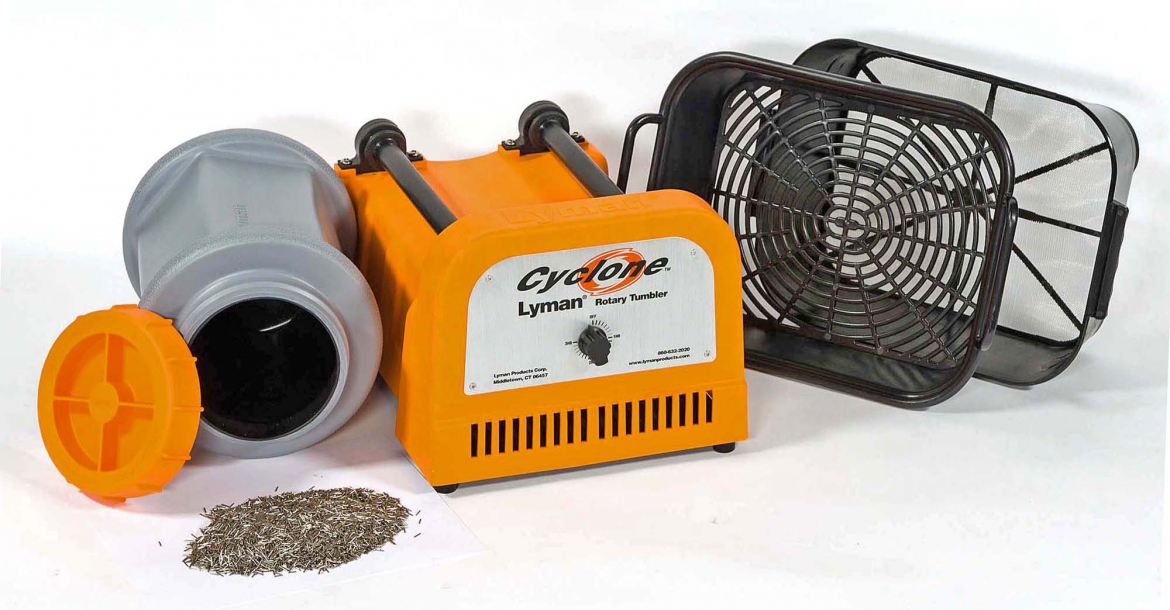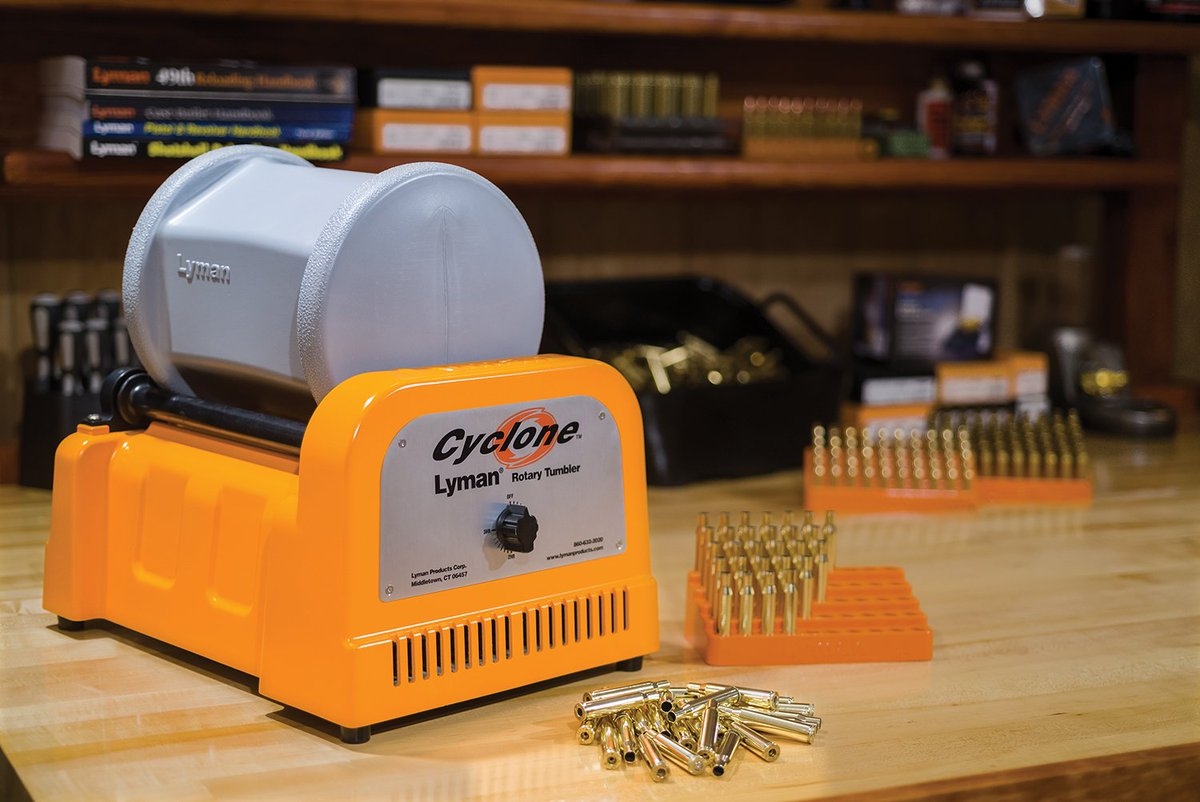Lyman "Cyclone" Rotary Thumbler: the effective case tumbler
The Lyman Cyclone Rotary Thumbler case tumbler is both simple and powerful, and a true bargain for the price and quality!
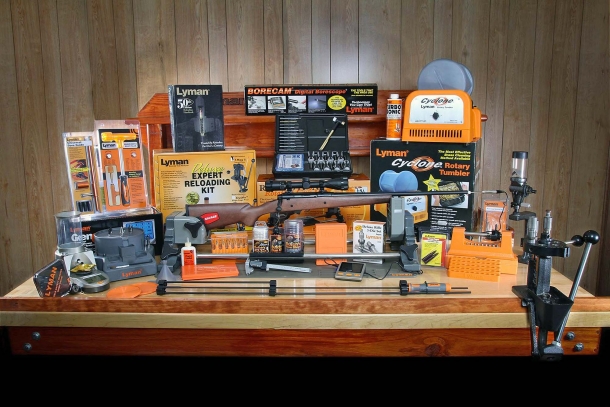
The Lyman Products Corp. is a global leader in maintenance, gunsmithing and reloading products
Headquartered in Middletown (Connecticut, U.S.A.), the Lyman Products Corp. is a well-known provider of high-end products dedicated to gunsmithing, gun cleaning and maintenance, and most important of all, ammunition reloading.
Among all the Company's reloading products, the Lyman Cyclone Rotary Tumbler recently caught our attention. First showcased back at the 2016 SHOT Show, it is currently being mass distributed both in north America and in Europe, as well as on many other markets. Judging from what we could see, the Lyman Cyclone is definitely worth of the consideration of any shooter out there: high price-to-quality ratio, exceptional performance and down-to-earth simplicity tell the Cyclone apart from most of its most direct competitors.
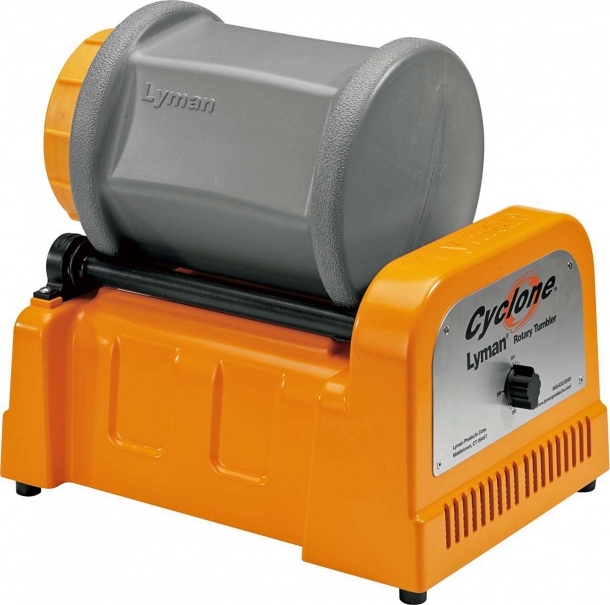
The Lyman Cyclone comes with a timer dial, providing up to 3 hours of continuous runtime
But why exactly should a shooter go for the Lyman Cyclone among all the rotary tumblers currently available on the market? All it takes to figurte it out is a quick look at its features.
The Lyman Cyclone rotary tumbler is based on a belt-driven electric motor and employs a rubber-lined drum and a large leak-proof plastic end cap with a generous rubber O-Ring.
According to the Lyman Products company, the plastic drum of the Lyman Cyclone tumbler can hold up to 1.000 cases of 5.56mm/.223 ammunition, although basing on our tests and those of other experts in Europe and north America, we suggest the drum to be filled only up to half of its capacity to obtain better results.
The drum is mounted horizontally on two rotating rails, alike to a lapidary polishing tumbler. The activation switch is located on front of the tumbler, in form of a timer dial that allows the Lyman Cyclone tumbler to be se3t set to run from 0 to 3 hours, shutting off automatically.

The main components of the Lyman Cyclone rotary tumbler
The Lyman Cyclone is clearly a very simple, entirely "analogic" system – easily familiarized with and mastered even by those shooters who, for many reasons, may be uncomfortable or less than familiar with the digital control units found on most modern vibratory or ultrasonic tumblers.
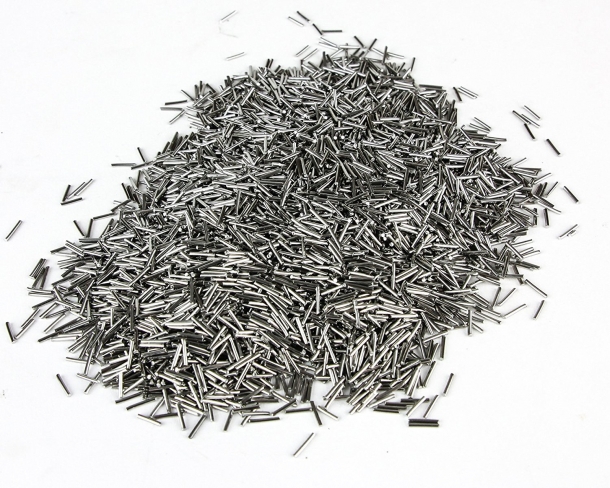
Five pounds of stainless steel pins are issued from factory with every Lyman Cyclone tumbler
The Lyman Cyclone is a mixed-media tumbler, using a mixture of water, detergent (a sample of Lyman's new Turbo cleaner is provided with each Lyman Cyclone tumbler) and stainless steel pins.
The scraping effect of the stainless media on the brass is what boosts the cleaning capabilities of the Lyman Cyclone rotary tumbler: the stainless steel pins easily slip inside cases and into primer pockets to provide superior cleaning action in those areas, which would otherwise often require manual intervention.
The rotary tumbling action combined with the scraping of the stainless steel media and liquid cleaning solution gets brass cleaner, both on the inside and on the outside, particularly if compared with standard dry media vibratory tumblers.
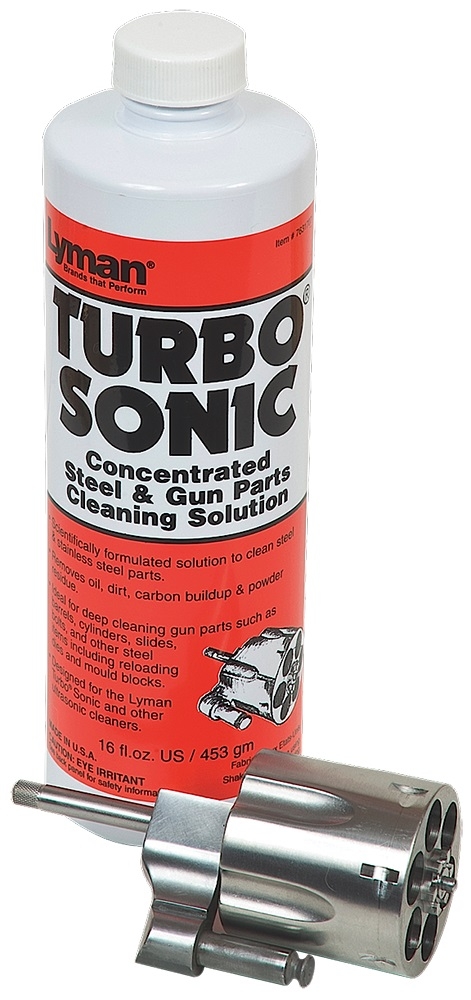
The Lyman Cyclone rotary tumbler will use any Lyman cleaning solution, mixed with water
The Lyman Products Corp. recommends two methods of cleaning brass with the Cyclone.
The first method includes an initial tumbling of about 15 minutes without the stainless steel media – water and detergent only – even before trimming, deburring, depriming or resizing the cases.
Following the initial tumbling, depriming and any other operation, the cases can be put on the tumbler again for a second cleaning cycle, this time with water, cleaner and steel pins: about thirty minutes to one hour of additional tumbling time will be required, depending from the quantity.
According to Lyman, this technique would provide better results: the bulk of dirt, including any trace of lube, would be removed from the brass before they're deprimed, trimmed, or resized, while the second cycle would provide a deeper cleaning, including the primer pockets, and polish the surfaces. The user will however need to dry the cases twice.
The second method is to tumble the fired cases with water, solvent, and the stainless steel pins only once, immediately after depriming them.
The advantage to this method is that only one tumbling cycle is required, but on the other hand, even with both the detergent and the steel media, this would take longer – from one to three hours, depending from the quantity of brass.
The Lyman Cyclone can be used to clean mid- or small-sized firearm components and gun parts as well – at least those that are likely to withstand the significant abrasive capabilities of the stainless steel media without taking damage.
The Lyman Cyclone is likely to provide exceptional results in terms of cleaning at almost all times, but the user should still be wary of what he or she is putting in the tumbler. Anything with a delicate finish or subject to scratching is best kept off the Lyman Cyclone: in this case, ultrasonic cleaners are the best choice.
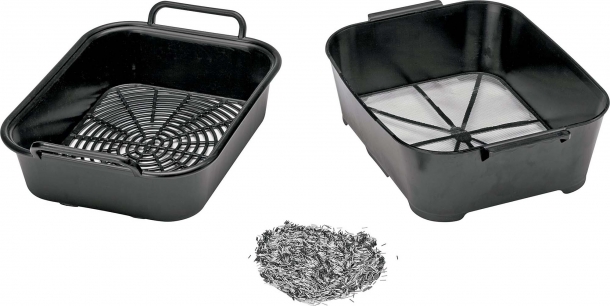
The tumbler comes with a pair of unique sifter pans which makes separating pins from the cases a breeze
Each Lyman Cyclone rotary tumbler is issued from factory with 2,25 kilograms (5 pounds) of reusable stainless steel pins and with a special pair of unique plastic and metal net sifter pans that allows easy and total recovery of the stainless media after each cleaning cycle. Additional steel pins can be purchased separately if need be. It just doesn't get any simpler than that.
The Lyman Cyclone rotary tumbler is powered though standard household power sockets; it is available in a 115V variant for the U.S. market and in three 230V versions with specific power cords and plugs for the EU, UK and Australian standards.
The manufacturer's suggested retail price for the Lyman Cyclone rotary tumbler is set at $229.95 in the United States, but the price will vary from Country to Country, and depending from the variant and even the distributor.
The Lyman Cyclone rotary tumbler can be purchased directly through the Lyman Products official website, or through Brownells: the well-known international distribution website offers global availability and overall lower prices.

